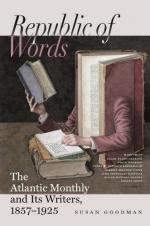Again, as regards American iron bridges, the same result is found to a great extent. Thus, Mr. Roebling’s Niagara Railroad Suspension-Bridge cost four hundred thousand dollars, while a boiler-plate iron bridge upon the tubular system would cost for the same span about four million dollars, even if it were practicable to raise a tubular bridge in one piece over Niagara River at the site of the Suspension Bridge. Strength and durability, with the utmost economy, seem to have been attained by Mr. Wendel Bollman, superintendent of the road-department of the Baltimore and Ohio Railroad,—the minute details of construction being so skilfully arranged, that changes of temperature, oftentimes so fatal to bridges of metal, have no hurtful effect whatever. And here, again, is seen the distinctive American feature of adaptation or accommodation, even in the smallest detail. Mr. Bollman does not get savage and say, “Messieurs Heat and Cold, I can get iron enough out of the Alleghanies to resist all the power you can bring against me!” —but only observes, “Go on, Heat and Cold! I am not going to deal directly with you, but indirectly, by means of an agent which will render harmless your most violent efforts!”—or, in other words, he interposes a short link of iron between the principal members of his bridge, which absorbs entirely all undue strains.
It is not to be supposed from what has preceded, that the American engineer does not know how to spend money, because he gets along with so little, and accomplishes so much; when occasion requires, he is lavish of his dollars, and sees no longer expense, but only the object to be accomplished. Witness, for example, the Kingwood Tunnel, on the Baltimore and Ohio Railroad, where for a great distance the lining or protecting arching inside is of heavy ribs of cast iron, —making the cost of that mile of road embracing the tunnel about a million of dollars. Nor will the traveller who observes the construction of the New York and Erie Railroad up the Delaware Valley, of the Pennsylvania Central down the west slopes of the Alleghanies, or of the Baltimore and Ohio down the slopes of Cheat River, think for a moment that the American engineer grudges money where it is really needed.




